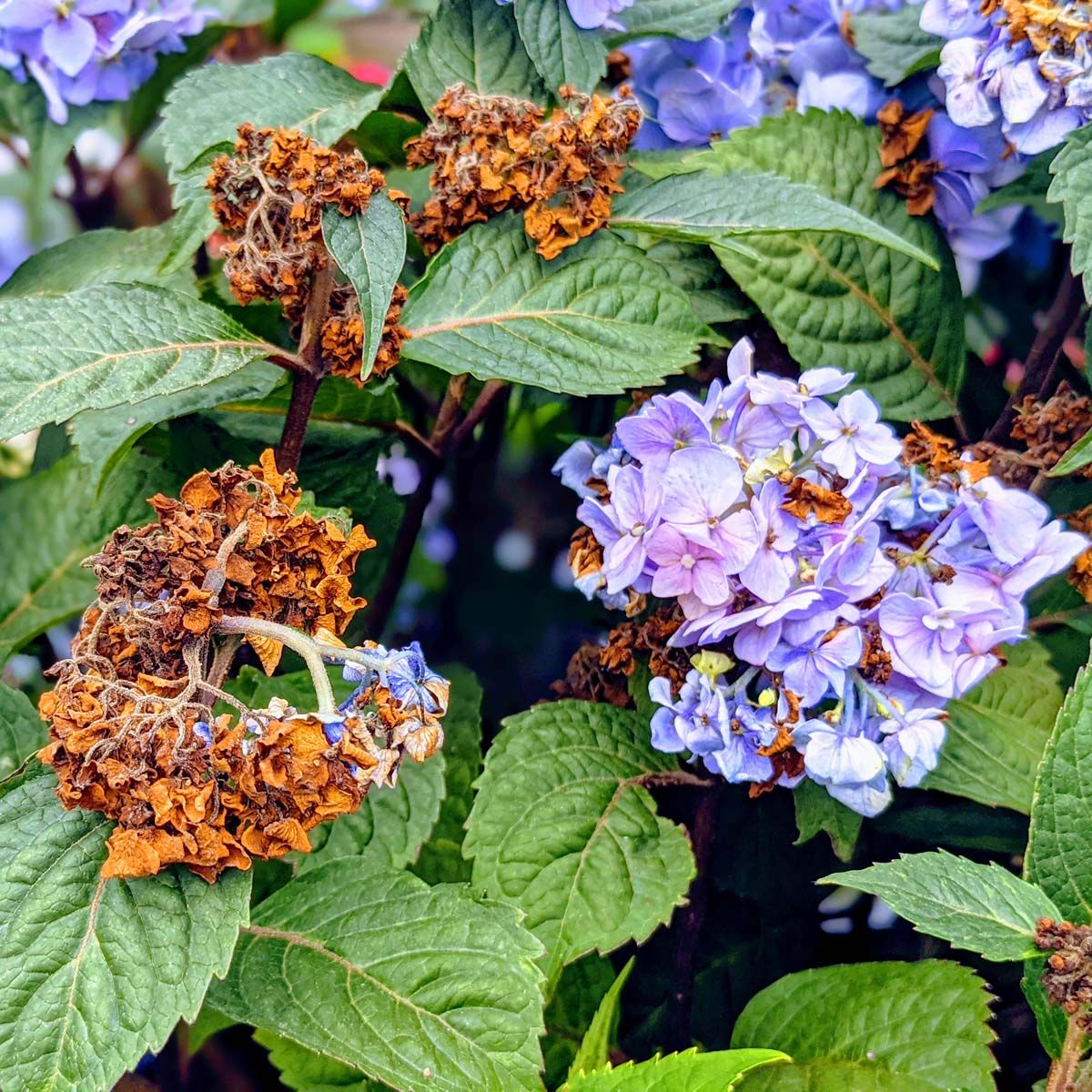Deadheading Hydrangeas In Summer: How To Keep Your Flowers Blooming
Deadheading Hydrangeas in Summer: How to Keep Your Flowers Blooming
Hydrangeas are beautiful flowering shrubs that can add a touch of elegance to any garden. However, if you want to keep your hydrangeas blooming all summer long, it's important to deadhead them regularly.
Deadheading is the process of removing spent blooms from a plant. This encourages the plant to produce new flowers and prevents it from putting its energy into seed production.
In the case of hydrangeas, deadheading is especially important for reblooming varieties. These varieties flower on both old and new wood, so deadheading the spent blooms will help to stimulate new growth and a second flush of flowers in the fall.
When to Deadhead Hydrangeas
The best time to deadhead hydrangeas is when the first set of blooms begins to fade. This is usually in late spring or early summer.
For reblooming varieties, you can deadhead again when the second set of blooms begins to fade. However, it's important to stop deadheading by mid-August, as this will give the plant time to form buds for next year's flowers.
How to Deadhead Hydrangeas
To deadhead hydrangeas, simply use a pair of sharp secateurs to cut the spent blooms off at the base of the stem. Be sure to make a clean cut, as any jagged edges can lead to infection.
You can also deadhead hydrangeas by pinching off the spent blooms with your fingers. This is a more gentle method, but it may not be as effective as using secateurs.
What to Do with the Dead Flowers
Once you've deadheaded your hydrangeas, you can either compost the dead flowers or discard them. If you choose to compost the flowers, be sure to remove any seed pods first.
Benefits of Deadheading Hydrangeas
There are several benefits to deadheading hydrangeas. First, it helps to keep your hydrangeas looking their best. Dead flowers can be unsightly, and they can also attract pests and diseases.
Second, deadheading encourages your hydrangeas to produce more flowers. This is especially important for reblooming varieties.
Finally, deadheading can help to extend the blooming season of your hydrangeas. By removing the spent blooms, you're encouraging the plant to produce new flowers.
Tips for Deadheading Hydrangeas
Here are a few tips for deadheading hydrangeas:
- Use sharp secateurs to make a clean cut.
- Deadhead the spent blooms at the base of the stem.
- Be sure to remove any seed pods from the dead flowers.
- You can compost the dead flowers or discard them.
Conclusion
Deadheading hydrangeas is a simple but important task that can help to keep your hydrangeas looking their best and blooming all summer long. By following these tips, you can easily deadhead your hydrangeas and enjoy their beautiful flowers for months to come.
Deadheading Hydrangeas in Summer
As the summer heat sets in, your hydrangeas may start to fade. But don't worry, there's an easy way to keep them looking their best: deadheading.
Deadheading is the process of removing spent blooms from a plant. This helps to encourage new growth and blooms, and it also keeps your hydrangeas looking tidy.
The best time to deadhead hydrangeas is in the summer, when the first set of blooms has started to fade. To deadhead, simply cut the stem of the spent bloom just above the next set of leaves.
If you're not sure how to deadhead hydrangeas, or if you want more information about the best time to do it, I recommend visiting . This website has a wealth of information about hydrangeas, including detailed instructions on how to deadhead them.
FAQ of deadheading hydrangeas in summer
Q: What is deadheading?
A: Deadheading is the process of removing spent flowers from a plant. This helps to encourage new growth and flowering, and it also keeps the plant looking tidy.
Q: When should I deadhead hydrangeas in summer?
A: You can deadhead hydrangeas at any time during the summer, but it is best to do it right after the flowers have finished blooming. This will give the plant time to produce new flowers before the end of the season.
Q: How do I deadhead hydrangeas?
A: To deadhead hydrangeas, simply use a pair of sharp scissors or shears to cut off the spent flowers at the base of the stem. Be sure to remove all of the flower head, including the sepals and any remaining petals.
Q: What are the benefits of deadheading hydrangeas?
A: There are several benefits to deadheading hydrangeas. First, it helps to encourage new growth and flowering. Second, it keeps the plant looking tidy. Third, it can help to prevent the spread of diseases.
Q: What are the risks of not deadheading hydrangeas?
A: If you do not deadhead hydrangeas, the spent flowers will eventually fall off on their own. However, this can leave the plant looking untidy. Additionally, if the spent flowers are left on the plant, they can attract pests and diseases.
Image of deadheading hydrangeas in summer
5 different images of "deadheading hydrangeas in summer" from Pinterest:
- A close-up of a hydrangea flower that has been deadheaded. The deadhead is a small, brown knob at the base of the flower.

- A hand holding a pair of garden shears, cutting off the deadheads of a hydrangea bush. The hydrangea bush is in full bloom.
- A before-and-after photo of a hydrangea bush that has been deadheaded. The before photo shows the bush with its deadheads still attached. The after photo shows the bush with the deadheads removed, revealing new buds.

- A group of hydrangea bushes that have been deadheaded. The bushes are all in different stages of bloom.

- A close-up of a hydrangea flower that is just starting to bloom. The flower is a beautiful shade of blue.

Post a Comment for "Deadheading Hydrangeas In Summer: How To Keep Your Flowers Blooming"